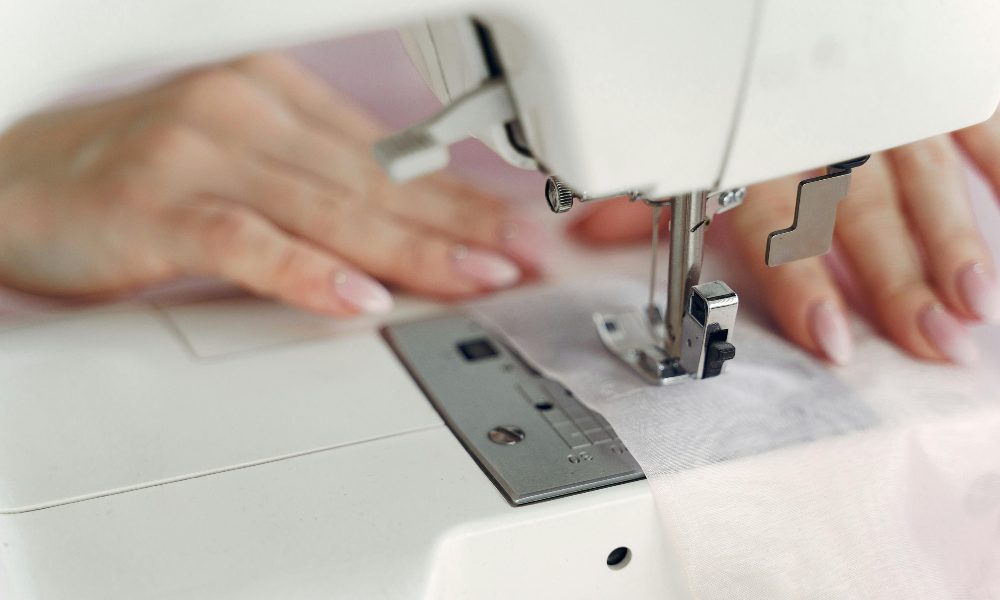Sewing can seem complicated if you need to learn the lingo. This blog explains five key sewing terms in simple words:
- Basting
- Grainline
- Seam Allowance
- Selvage
- Topstitching
Why learn these words? Knowing them makes sewing instructions much easier to follow. Ready to get started?
Basting
Basting is a temporary way to hold fabric pieces together before the actual stitching. It’s like using a giant, loose stitch to keep things in place.
You might baste fabric pieces together before sewing the final seam. Or you can baste a zipper, trim, or decoration onto your project first, then secure it with absolute stitches afterward.
Basting stitches should be big and easy to remove later. You can baste by hand with a needle and thread or use a long machine stitch length.
Grainline

The grainline is the direction of the threads in a woven fabric. It’s essential for stretching and hanging.
Most patterns have a grainline arrow printed on them. This shows you which direction to lay out your fabric pieces. Following the grainline helps the finished item drape properly.
The grainline doesn’t matter as much on stretchy knits. However, paying attention to the grainline gives a nicer result for woven fabrics like cotton or linen.
Seam Allowance
The seam allowance refers to the space between the cut edge of the fabric and your stitching line. Think of it as the border or margin around your fabric piece where you sew.
Most patterns include lines marking the standard 5/8″ (1.5cm) seam allowance. The allowance prevents your stitches from being too close to the raw edge.
It’s important to sew accurately and not cut off the seam allowance. Otherwise, you could end up with a smaller garment that doesn’t fit together correctly.
Selvage
The hem is the tightly woven edge that runs along the length of a fabric bolt or piece. It prevents raveling and looks tightly criss-crossed.
Most patterns instruct you to cut away and discard the hem before sewing. This tight edge doesn’t fray so it can look bulky in seams.
However, some crafters intentionally use the selvage to create patterns or trims. When recycling clothing, colorful selvages can be used as unique embellishments.
Topstitching
Topstitching is a line of visible stitching on the outside of a garment or project. It’s decorative but also reinforces seams and edges.
Jeans, shirts, and bags often use topstitching to highlight details like pockets, plackets, or collars. The stitches can be straight or create designs.
Topstitching uses a strong topstitch needle and polysied thread. It takes some practice to sew straight, evenly-spaced topstitching rows.
FAQs
What are the five sewing terms covered in this article?
The key sewing terms explained are basting, grainline, seam allowance, hem, and topstitching.
Why is it important to understand these sewing terms?
Knowing these basic terms makes it much easier to follow sewing patterns and instructions correctly.
How are the sewing terms explained in this article?
The terms are described in simple, conversational language aimed at a 6th-grade reading level for high readability.
Conclusion
Knowing sewing terms like basting, grainline, seam allowance, selvage, and topstitching helps make patterns much more straightforward.
Take your time to look up any other confusing words as you learn to sew. Understanding the proper language leads to better-finished projects you can be proud of. What new sewing terms do you want to learn next?
***
Main image: freepik




